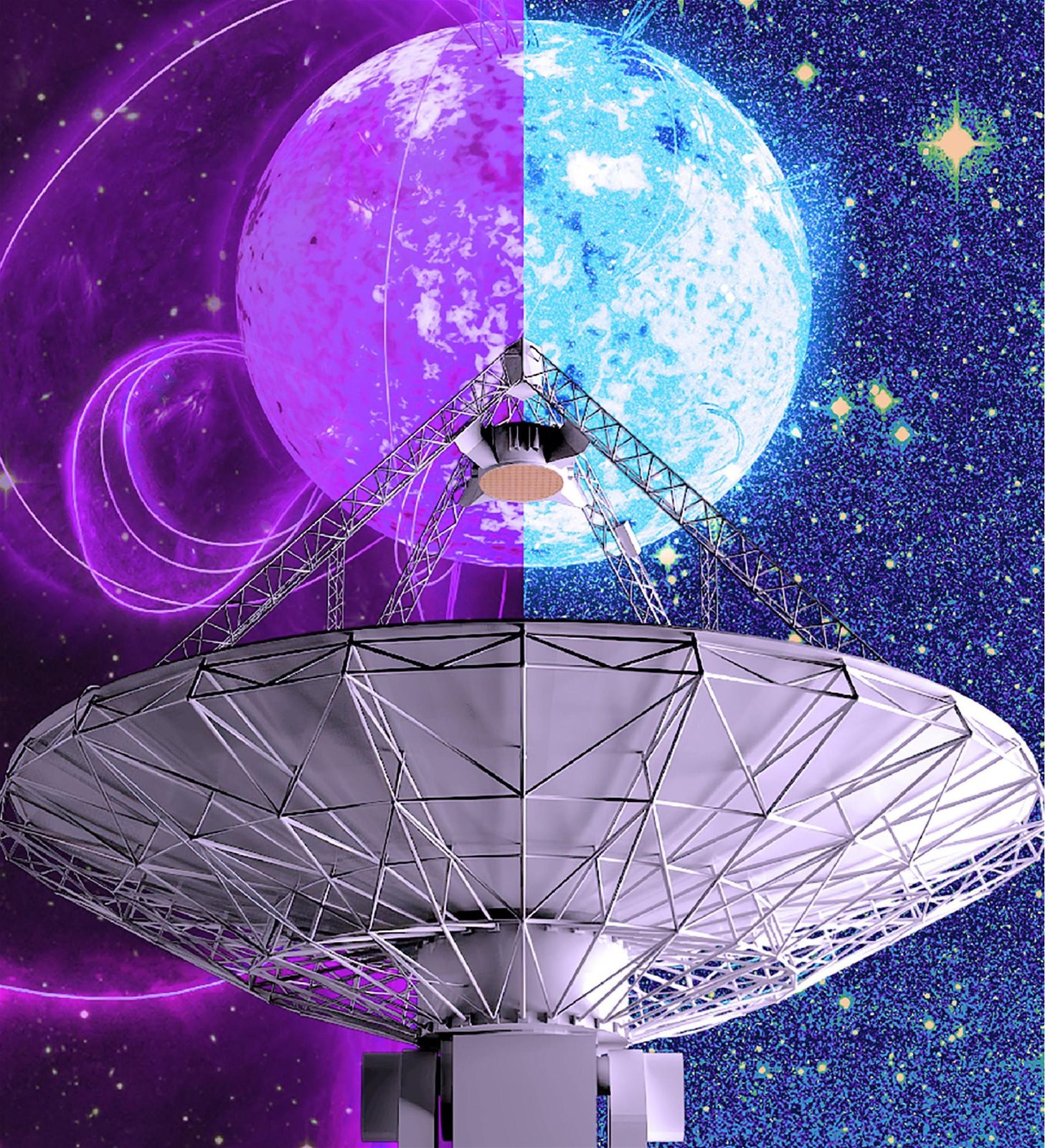
Illustration showing a neutron star or white dwarf over the ASKAP radio telescope
© Carl Knox, OzGrav
Astronomers have discovered the slowest spinning radio-wave-blasting neutron star ever seen, taking almost an hour to A complete a full rotation. That may sound fast, but these dead stars are known to spin so rapidly that some experience 700 full turns every second. Even the most leisurely pulsars discovered so far complete a full rotation in a second or so. This ultra-leisurely neutron star, designated ASKAPJ1935+2148 and located 16,000 light years from Earth, is emitting radio light at a rate too slow to even fit with current theories describing the behaviour of these dense stellar remnants. “In the study of radio-emitting neutron stars we are used to extremes, but this discovery of a compact star spinning so slowly and still emitting radio waves was unexpected,” said Ben Stappers of the Jodrell Bank Centre for Astrophysics.
Neutron stars are born when massive stars with about eight to ten times the mass of the Sun run out of the fuel needed for nuclear fusion within their cores. This ends the outward radiation pressure that has supported the star against the inward push of its own gravity. Once this outward flow of energy ceases, the star’s core collapses, triggering a supernova explosion that blows away its outer layers and the majority of its mass. The result is a stellar remnant with between one and two times the mass of the Sun compressed to a width of around 12 miles (20 kilometres).